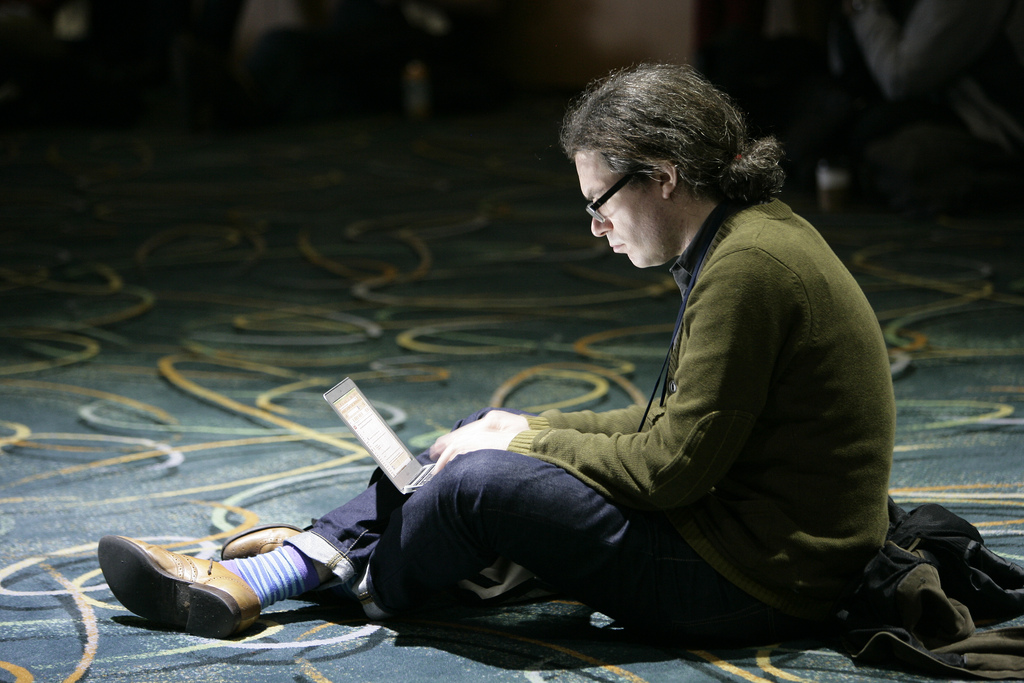Older people “don’t go out much”, they “chew funny”, are “all wrinkled and short”, or even “have heart attacks and die”. These were the frank and blunt answers that Jantz et al (1976) got in their classic study, when they asked preschool children to describe aged people (in Dellmann-Jenkins & Yang, 2011: 422).
The media are not much better, in the way they portray people over 65 years of age. Older adults form a significant and ever-growing segment of the population in most western societies but this ever increasing group is barely visible in the media. Older people are seldom featured, and if they are it is often in a stereotyped and negative way. This absence of nuanced media representations can hinder the construction of a balanced public opinion about older persons. How media portray older people is crucial, because it affects how the different age groups think about each other today -and how they will interact tomorrow.
The media’s selection and representation of topics is not simply a reflection of reality (Fealy & McNamara, 2009: 21). Rather is it the result of a ‘framing’ process, in which some chosen aspects are made more salient, to make the story understandable to the reader, viewer or listener. By framing topics in a specific manner, media thus propose a particular perspective. They also suggest which aspects are considered important and newsworthy –and which are not (Durrant et al, 2003). Apparently, older people are seldom deemed newsworthy. There is a consistent underrepresentation and stereotyping of older people in media, as numerous studies have shown (e.g. Lauzen & Dozier 2005; Robinson et al 2007; Fealy & McNamara, 2009). Some stereotypes are positive, e.g. the perfect grandparent or the ‘golden ager’, but most are considered negative, e.g. the victim, the impaired or the depressed older person (Martin, 2009; Fealy & McNamara, 2009). Is this problematic? It may be. When younger people have a positive, benevolent image of older people, they are more inclined to interact with them (McCann et al, 2005). Positive representations of older people therefore stimulate the dialogue between the generations.
Today, younger people hesitate to identify themselves with older people or even the ageing process (e.g. Friedan, 1993; Niejahr, 2004; Poulton, 2008). An honest example is given by the American author Betty Friedan in her book “The fountain of Age”:
“I went through my forties and into my fifties. (…) I forgot about growing older. (…) I didn’t really want to look at or listen to those finished old people. Even “vital” ones. I didn’t want to be contaminated by them. (…) But why did we all seem to feel the need to distance ourselves from age, the closer we got to it?” (Friedan, 1993: 13-20).
The German demographic expert Elisabeth Niejahr noticed a similar ‘avoiding attitude’ towards ageing. Niejahr describes how studies among retirees invariably show that they ‘feel younger than they are’. This, Niejahr states, could be considered as a sign of vitality and lust for life -or as a collective delusion. “Old are always only the others. Everybody wants to get old, but nobody wants to be old.” (Niejahr, 2004: 16).
The truth is, we are all getting older. And although the ageing of the European society has long been recognized, we do not fully seem to realize what social changes it will bring about, or which “challenges for the welfare systems and public finances” will emerge (Eurobarometer, 2012: 5). Currently, many baby-boomers are entering their sixties and starting to retire (Eurobarometer 2012). At the same time, birth rates are falling. These changes will cause a decline in the work force over the next decades. At some point, the senior forty percent of the population will no longer be working or paying into the social security system, but will still hope to receive its pensions and social security benefits; financed by ever fewer younger, working people (Niejahr, 2004). Different generations will have to sustain an intelligent conversation with one another to make sure these issues are addressed. The way the older sections of the population are portrayed is therefore important.
What is thought, spoken, and read about older people now, will influence the response to the challenges in society that lay ahead. The media can assume an important role in this process by presenting older adults more often, and reporting about them in a diversified way.
The full version of this article is published under the title “Who cares about the newspapers?” in the book Screening Age (2013). Reference: Torben-Nielsen, K. (2013). Who cares about the newspapers? In: Schwender, C., Hoffmann, D. & Reißmann, W. (Hrsg.). Screening Age: Medienbilder – Stereotype – Altersdiskriminierung. Schriftenreihe Gesellschaft – Altern – Medien. Band 5, Kopaed: München, 280p. ISBN 978-3-86736-175-0
References
• Fealy, G. & McNamara, M. (2009). Constructing ageing and age identity: a case study of newspaper discourses. Dublin: National Centre for the Protection of Older People
• Friedan, B. (1993). The fountain of age. New York: Simon & Schuster.
• Jantz, R. K., Seefeldt, C., Galper, A., &Serlock, K. (1976). Children’s attitudes toward the elderly: Report to the American Association of Retired Persons and the National Retired Teachers Association. College Park, MD: University of Maryland Press
• Lauzen, M. M. & Dozier, D. M. (2005). Recognition and respect revisited: portrayals of
age and gender in prime-time television. Mass Communication & Society 8(3),
241-256.
• Martin, J. (2009).The portrayal of older people in Disney live action films from the 1990s and the 2000s. Provo, Utah (USA): Brigham Young University
• McCann, R. M., Dailey, R. M., Giles, H., & Ota, H. (2005). Beliefs about intergenerational communication across the lifespan: Middle age and the roles of age stereotyping and filial piety. Communication Studies, 56, 293–311
• Niejahr, Elisabeth (2004). Alt sind nur die anderen. So werden wir leben, lieben und arbeiten. Fischer Verlag: Frankfurt am Main
This article was translated from the German “Die Generation Gold und der Rest der Gesellschaft”
Photo credit: Ilka Plassmeier / pixelio.de
Tags: elderly, media coverage, media portrayal, Media Stereotyes, negative coverage, old people, people of age













































